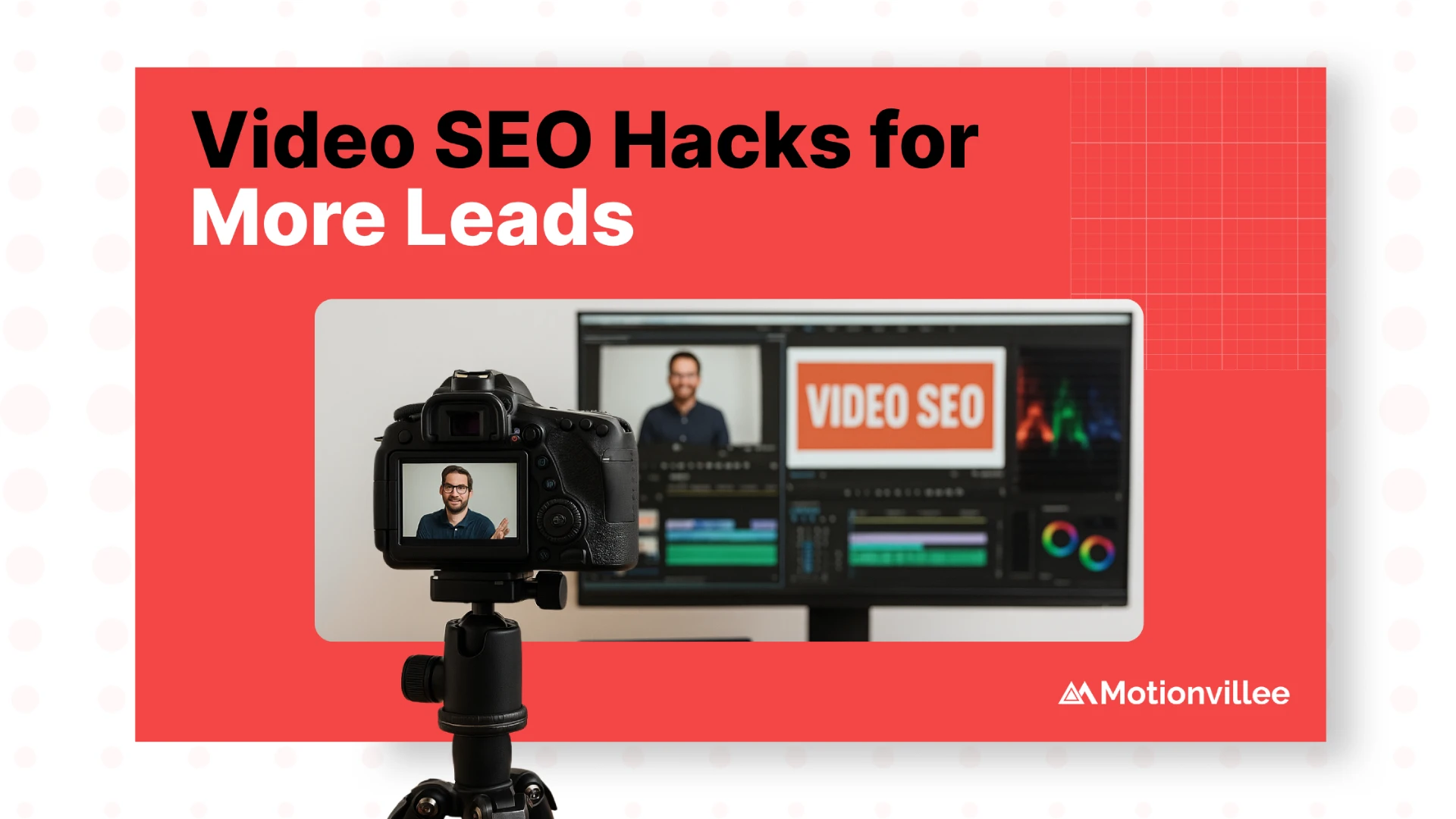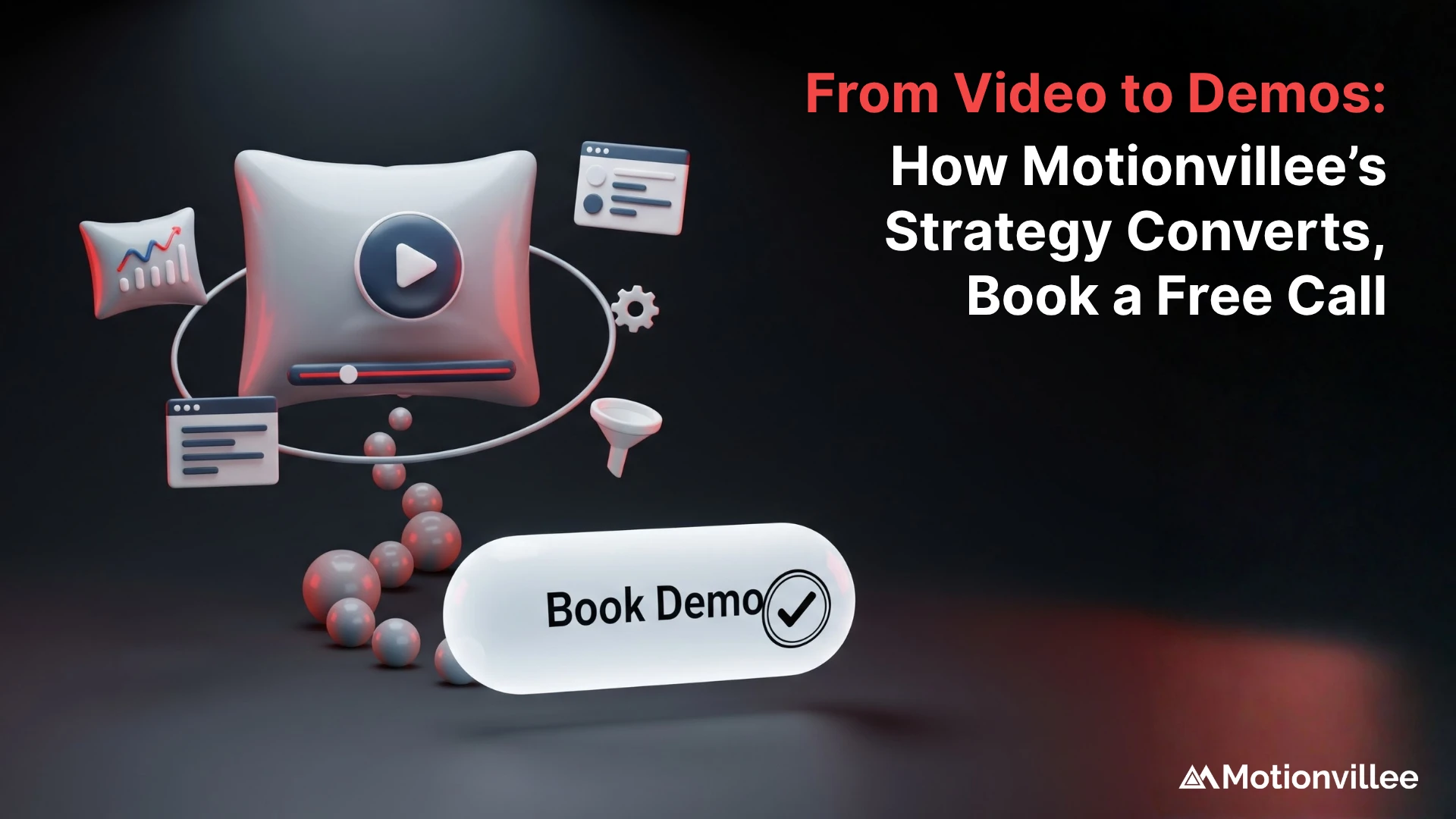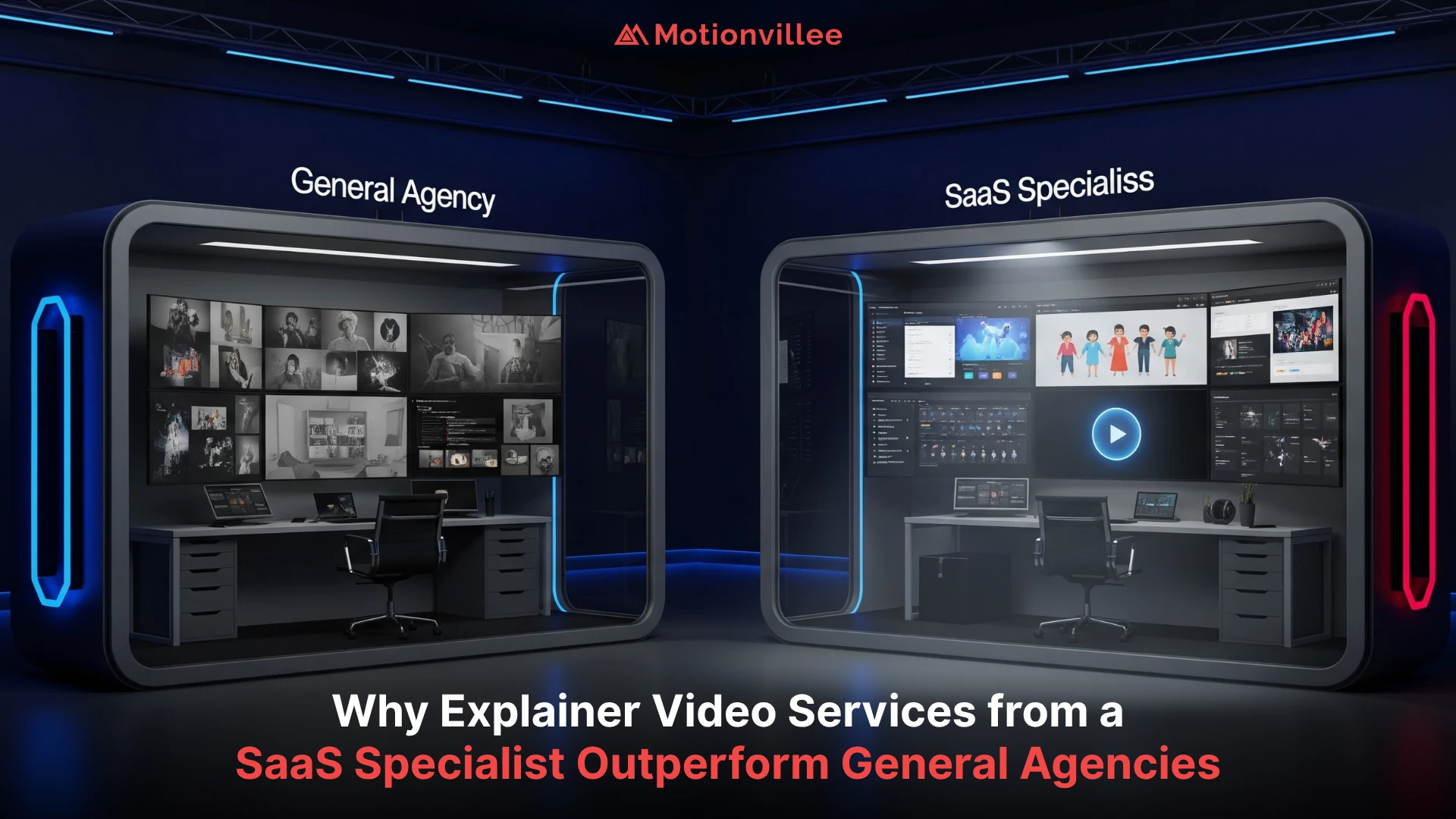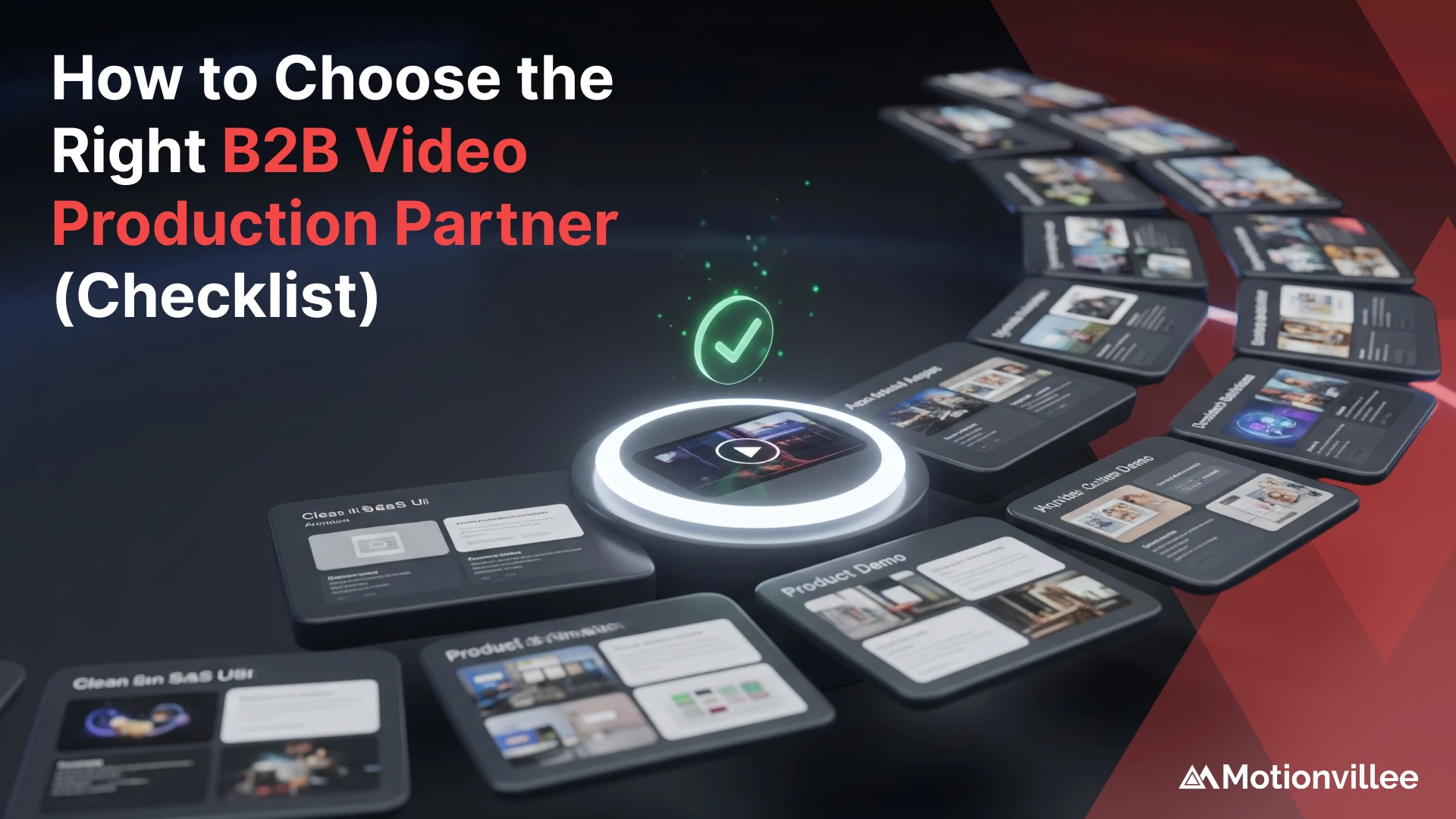Video SEO hacks are no longer optional, they are essential for driving organic leads in 2025. As search engines favor rich media, optimizing your videos can boost visibility, engagement, and conversions. By treating your video content with the same care as written SEO, you unlock new traffic sources and strengthen your marketing and video production efforts.
Here’s why video SEO matters now:
- Search results increasingly feature video snippets
- Videos keep visitors on the page longer, signaling quality
- Properly optimized videos can rank in both search and video feeds
In this post you will learn five practical hacks to make your videos work harder:
- Craft metadata that matches user intent
- Add transcripts, captions, and structured data
- Design thumbnails that demand clicks
- Build and submit a dedicated video sitemap
- Use chapters and playlists to guide viewers
Next we will dive into Hack 1 and show you how to optimize your video metadata with targeted keywords.
Hack 1: Optimize Your Video Metadata with Targeted Keywords
One of the most effective video seo hacks starts before you record a single frame, with metadata that matches search intent. Clear titles, descriptions, and tags help both viewers and search engines find your content.
Use these tools and tactics to uncover high-impact phrases:
- Google Trends to spot rising video topics
- YouTube’s keyword planner or Ahrefs for search volume data
- Competitor analysis by reviewing metadata of top-ranked videos
When building your metadata, follow these guidelines:
- Title: Keep it under 60 characters, begin with your main phrase, and make it descriptive
- Description: Write a concise summary in the first 150 characters, then add detail with relevant keywords and a call to action
- Tags: Choose a mix of broad and specific terms, limit to ten tags to maintain focus
These metadata best practices reflect the same attention we bring to our Sales and Marketing Video Production services at Motionvillee. By aligning your metadata with targeted keywords and proven workflows, you set the stage for higher rankings and more organic leads.
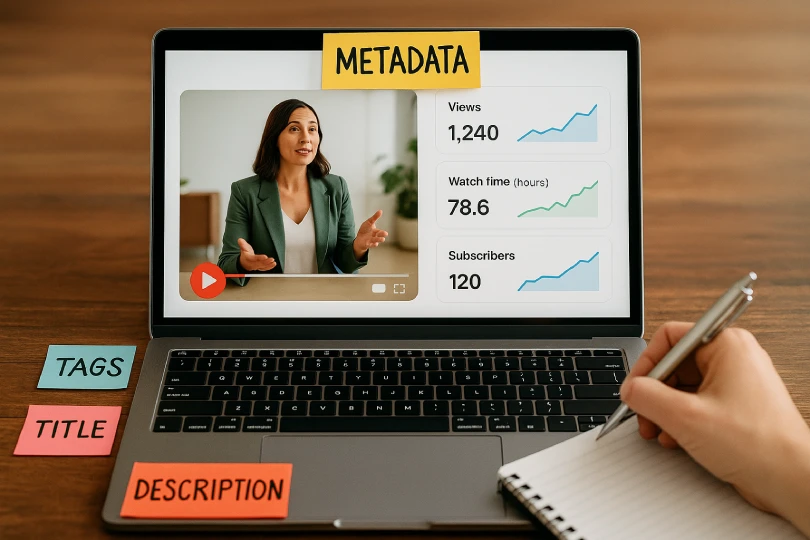
Hack 2: Add Transcripts, Captions, and Structured Data
One of the easiest video seo hacks is to provide on-page transcripts and closed captions. This ensures all spoken words become searchable text. It also improves accessibility and user experience, helping viewers who watch without sound.
Key benefits of transcripts and captions:
- Better indexation: Search engines can crawl your full script
- Improved engagement: Viewers stay longer when they can follow along
- Accessibility boost: Captions help hearing-impaired or non-native speakers
- Support for explainer video for sales: Buyers can quickly scan key points
Structured data takes your SEO further by signalling to search engines that you have video content. Implement VideoObject JSON-LD with these steps:
- Add a <script type=”application/ld+json”> block in your page header
- Include required fields: @context, @type, name, description, thumbnailUrl, uploadDate, contentUrl
- Optionally add duration, interactionCount, and publisher
- Test your markup with Google’s Rich Results Test tool
By combining readable transcripts, accurate captions, and VideoObject structured data, you reinforce your SEO strategy from multiple angles. Next, we will cover how to design thumbnails that drive clicks and demand attention.
Hack 3: Design Eye-Catching Thumbnails and A/B Test Them
A strong thumbnail can make or break your click-through rate. Among the top video seo hacks, crafting a clear, compelling image is one of the most direct ways to boost views and engagement.
Thumbnail best practices to lift clicks:
- Use a high contrast image with a clear focal point
- Include minimal text three to five words at most
- Show a human face or expressive emotion to draw attention
- Maintain brand consistency with colors and logo placement
- Save at 1280 x 720 pixels for optimal display across platforms
Once you have a thumbnail concept run a simple A/B testing workflow to find your top performer:
- Create two thumbnail variations with distinct visuals or text
- Publish both versions on your hosting or analytics platform
- Split your audience evenly and track click-through rates over a set period
- Compare results and select the higher performing design
- Iterate by tweaking colors wording or layout based on data
Combining thumbnail best practices with A/B testing turns each visitor into a potential lead. Next we will explore how to generate and submit a dedicated video sitemap and optimize embeds.

Hack 4: Generate and Submit a Video Sitemap, Then Optimize Embeds
A reliable video sitemap helps search engines discover and index your content. This hack is a cornerstone of effective video seo hacks and ensures your videos get the attention they deserve.
Steps to build and register your video sitemap in Search Console:
- Create a sitemap XML file listing each video URL and required metadata (title, description, thumbnail, duration)
- Host the sitemap at yoursite.com/video-sitemap.xml
- In Google Search Console, go to Sitemaps, enter the sitemap URL, and click Submit
- Monitor coverage reports to catch any indexing issues
Next, optimize how you embed videos on your pages to boost dwell time and crawlability:
- Place embeds above the fold so they load immediately when the page opens
- Provide a brief introduction or context paragraph above each embed
- Use responsive embed code to ensure videos resize correctly on mobile
- Include transcript links or expandable transcript panels below the video
- Lazy-load non-critical embeds further down the page to improve load speed
Combining a registered video sitemap with strategic embed placement not only improves indexation but also enhances user experience. This approach supports your wider video production for marketing efforts by driving more qualified traffic and engagement.
Hack 5: Leverage Chapters and Curated Playlists
Breaking a long video into chapters makes it easier for viewers to find what they need and keeps them on your page longer. It also sends a signal to search engines that your content is well structured and engaging.
Use timestamps to guide viewers:
- Add clear time markers in your description or platform UI, for example “00:00 Introduction,” “01:15 Key Feature,” “02:30 Pricing”
- Keep each chapter focused on one topic or question
- Use descriptive labels that match common search phrases
- Test chapter lengths; aim for one to three minutes per segment
Organize videos into themed playlists to boost SEO:
- Group related videos under a clear playlist title such as “Product Demo Series” or “Quick Explainer Clips”
- Write a playlist description that includes target keywords and a concise summary
- Encourage viewers to watch the next video with an end screen or verbal prompt
- Update playlists regularly to add fresh content and maintain relevance
Chapters and playlists work together to improve watch time and help search engines understand your content flow. By guiding viewers directly to topics they care about and keeping them within your video collection you increase chances of organic discovery and lead generation.
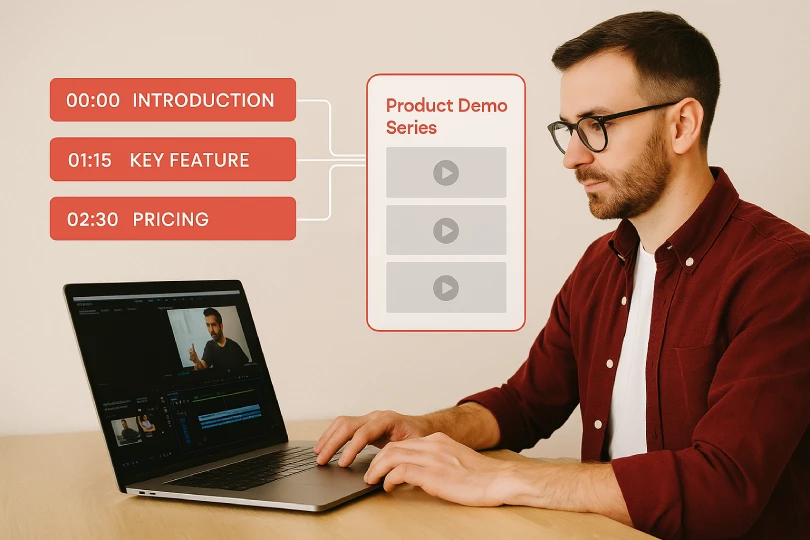
Bonus Tip: Monitor Performance and Iterate Continuously
Tracking results turns one-off efforts into lasting gains, and measuring video metrics with quick experiments shows what resonates and where to improve.
Key metrics to track for ongoing optimization
- Click-through rate (CTR): Percentage of viewers who click your video from search results or thumbnails
- Watch time: Total minutes viewed, indicating content value
- Average view duration: How long viewers stay engaged on each video
- Engagement actions: Likes, comments, and shares that boost organic reach
- Conversion rate: Percentage of video viewers who take your desired action, such as signing up or requesting a demo
Use quick A/B tests to refine your approach
- Length: Compare 30-second versus 60-second versions to see which holds attention better
- Format: Test animated explainer segments against live action clips
- Placement: Experiment with video embeds at the top of the page or within the body content
Set a regular review schedule, weekly or monthly, and use your analytics platform to pull reports. Note which changes drive the biggest uplift, then apply those insights to future videos.
Next Steps: Your Video SEO Action Plan
You now have five practical video seo hacks to drive organic leads in 2025. Use this checklist to make sure nothing slips through the cracks:
- Optimize metadata with targeted keywords
- Add transcripts, captions, and VideoObject structured data
- Design high-impact thumbnails and A/B test them
- Generate and submit a dedicated video sitemap, then refine embed placement
- Leverage chapters and curated playlists to guide viewers
Ready to turn these hacks into results? Get in Touch to audit your current video SEO setup and craft a tailored strategy. Our team will help you implement each step, monitor performance, and iterate for steady growth.


